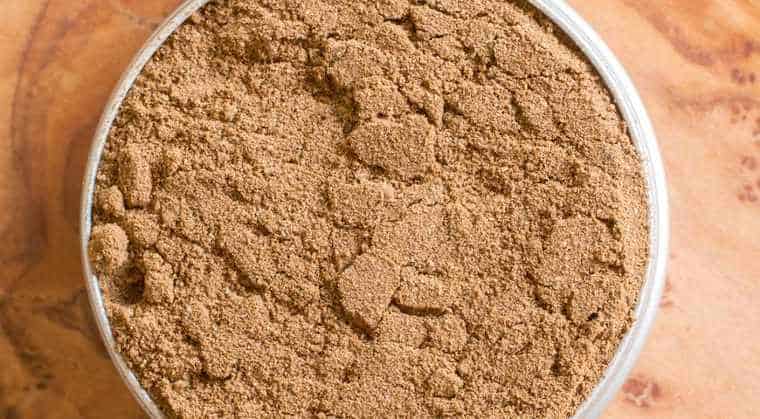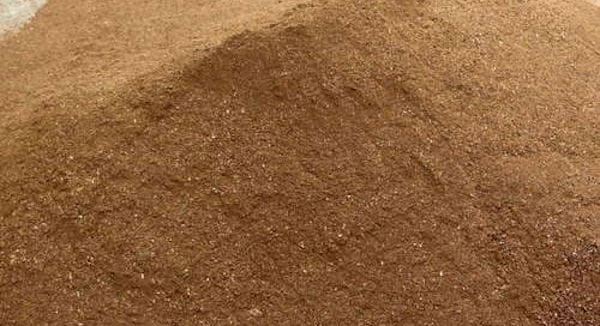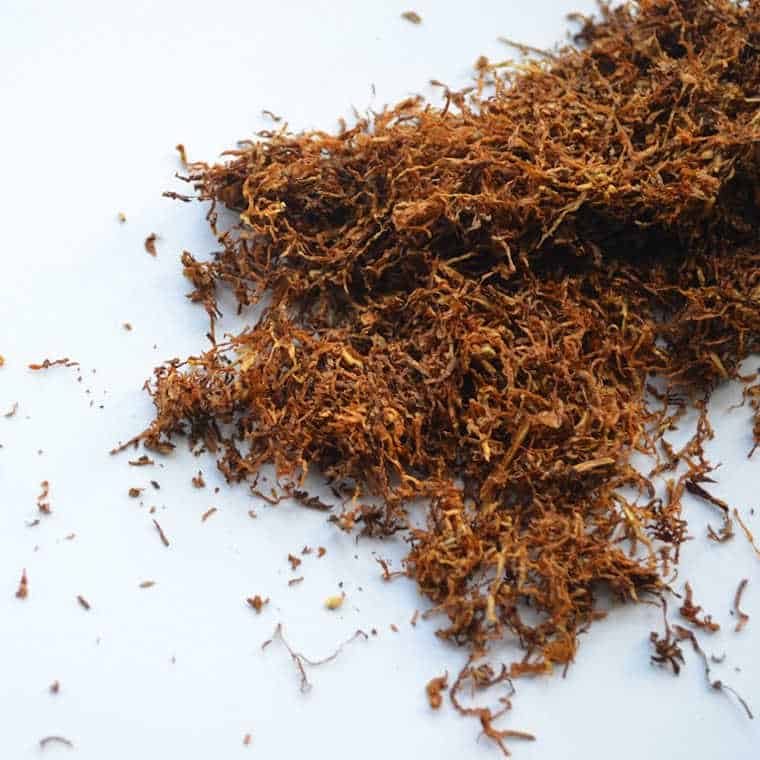Many gardeners want to use biological remedies in the fight against pests, as well as fertilizers. But what should we use as natural fertilizer and insecticide?
We can use many natural things such as banana peels, coffee grounds, seaweed, tobacco dust, and many more. But you must know how and what amount you should use for your garden safety.
Here we will discuss the benefit of tobacco dust for the garden and lawn. Everyone knows about tobacco. It’s harmful to health. But the fewer people know that tobacco is good for plants and it has vast use in agriculture and livestock as insecticide, fungicide, and fertilizer.
So, let’s know How and why you should use tobacco dust in your garden or lawn?
Benefits of Tobacco Dust
What is tobacco dust?
Tobacco dust is the brown color waste that produces in the tobacco industry. It is mainly a by-product of the cigarette company. The tobacco dust can be found in the horticulture center in different packages for use as organic insecticide or fertilizer in domestic gardening. It can apply to crops in liquid and powder form.
Let’s have a look; why tobacco dust use in organic gardening?
- Tobacco dust contains a high amount of Nitrogen, Potassium, Phosphorous, and Iron.
- It is a great source of Nitrogen for newly grown houseplants.
- It has a high organic matter that makes it a good fertilizer.
- The tobacco dust promotes the active growth of the plants and also improves the yield and quality of the fruit. Moreover, it improves soil health by increasing the availability of trace elements and useful minerals.
- Tobacco dust also acts as a natural insecticide because of the nicotine that remains in it.
- It improves the electrical conductivity, water intake capacity, and water holding capacity of the soil.
Do you know? The use of tobacco dust as fertilizer can increase 40 % of the yield.
Composition of Tobacco Dust
The chemical composition of tobacco leaves is complex and rich, it includes not only nicotine (from 0.7 to 5%) and other alkaloids, but also organic proteins, carbohydrates, aromatic oils, etc. and minerals (calcium, potassium, magnesium, sulfur). This means tobacco dust are not only able to destroy harmful insects, but also to enrich the soil.
Here is the quick chart of the chemical composition of tobacco dust(dry)-
- Moisture Content 7.7%
- pH 5.69
- Ash 35.4%
- Nitrogen (2-5%)
- Potassium (1-3%)
- Phosphorus (1-2%).
- Carbon: Nitrogen 15:1
- Calcium 3.7%
- Magnesium 0.55%
- Nicotine 1.50%
Tobacco Dust as Fertilizer for Lawn and Garden
- For planting fruit trees and shrubs, cups 1-2 of tobacco dust are added to each planting hole.
- Before sowing the lawn, approximately 30-40 g of tobacco dust per 1 sq.m are applied to the soil and watered.
- As the main fertilizer, tobacco dust is used in a dose of up to 100 g per square meter once a year.
- Tobacco dust for indoor flowers: ½ tsp. tobacco dust is mixed with 10 liters of finished soil and this mixture is used for spring transplantation of indoor plants.
- You can use it for soil fertilizer in pots with sand. Soil, sand, and tobacco should be taken in equal proportions.
How to Use Tobacco Dust in Garden?

There are several methods of apply tobacco dust such as-
Dusting/ Pollination
In this method, Plants and soil are pollinated with dry tobacco dust. You can use tobacco dust in its pure form or also mix with ash or lime in equal proportions (1: 1). Generally, 1 sq.m requires 10-20 g of the mixture.
The main principle of the method is: the food of insects will be covered with a layer of dust, and they will have nothing to eat. After a while, they will start to die. With this method, plants can be treated in open areas and in greenhouses.
Spray Decoction and Infusion
To prepare the decoction,
- Mix half a cup of tobacco dust in 1 liter of water and boil for about half an hour.
- Add water to the initial level during evaporation.
- Leave the broth in a dark place for a day.
- Filter the solution and add 2 liters of water.
- Mix a small piece of soap (10-15 g) or 1 -2 tablespoon of liquid soap. You can also add onion peel or garlic cloves in the solution.
Spray the plants with a ready solution. The event takes place 2-3 times every 7-10 days. Spray the solution on fruit trees less than 2 weeks before harvest.
The infusion of tobacco is very similar to a decoction. You need 2-3 days to make an infusion. To prepare the infusion-
- Take 1/2 cup of tobacco dust and pour in 1 liter of hot water.
- Infuse the solution for 24 hours and stir it periodically.
- Filter the infused solution.
- Add 1-2 liters of water and a piece of soap or 1-2 tablespoon liquid soap.
- Pour the solution in a spray bottle and use it immediately after preparation.
Another Recipe:
To make infusion-
- Take a cup of wood ash and a cup of tobacco dust and pour it in 1 liter of hot water.
- Leave for a day.
- Filter the resulting infusion and pour it into a bucket, add water to the full extent.
- Add 2 tablespoons of liquid soap. Stir and spray the garden thoroughly.
Fumigation
This method is suitable for pest control of fruit trees. Fumigation should apply only after the flowering period is over. If you are fumigating in the flowering stage, it can scare the bees and other pollinating insects that prevent pollination. In addition, it is important to guess the direction of the wind: the bottom line is that the tobacco smoke does not go to the house or the neighbors.
How to fumigate with tobacco dust?
- Gather some dry branches, firewood, or straw and set fire.
- When the flames up a bit pour tobacco dust on top.
- Continue the fumigation process for 30-2 hours.
In greenhouses, fumigation is used against aphids, thrips, and whiteflies at the rate of 5-10 g per 1 sq.m. During the process, you need to exit the greenhouse. Perform the fumigation procedure at least 2-3 days before sowing.
Tobacco Dust as Pesticides

Tobacco dust has nicotine that makes it the best organic homemade insecticide. You can get rid of many pests and insects with nicotine of tobacco dust such as Flies, Mosquitoes, Aphids, Sucker, Thrips, Caterpillars,
Ringworm, Fly Onion, Moth Winter, Ringed Silkworm, Crucifer Flea Beetles, Spider Mites, Whiteflies, Slugs, and Many Other Garden Pests.
How to Make Tobacco Dust Pesticides Spray
Steps-
- Mix 1 cup of dry tobacco in 3-4 liters of water.
- Let them macerate for 12-24 hours (to make strong pesticides increase the maceration period).
- Add 1 tablespoon liquid soap.
- Filter the solution with a fine sieve and remove the tobacco chips.
- Pour the solution on a spray bottle.
How to Fight Specific Insects?
Cruciferous Flea
Tobacco dust is applied to beds with crucifer crops (cabbage, turnip, and radish) against cruciferous flea. This pest is particularly dangerous during sowing: in the cotyledon phase.
The cruciferous fleas adopted by cabbage plants can no longer cause serious damage, but there are other pests – cabbage maggot and slugs. Tobacco powder or tobacco with lime, scattered around the plants in a 4 – 5 cm radius deter first and dry until the latter. To control this parasite, sprinkle with a mixture of 20 g per 1 m². Mix lime, wood ash, and rock phosphate (3: 1: 1: 1) to get a better result.
Moth
Treat the plant with the infusion. 150 g of tobacco dust is poured with hot water, leave for a day. Filter in a bucket and added with clean water. Ready solution to use immediately.
Spider Mite
Indoor plants are treated with a decoction of tobacco dust when the infection is detected. After a week, the procedure is repeated. If necessary, it can be repeated again after 10-14 days
Aphids, Thrips, Caterpillars
Aphids, thrips, caterpillars are the leaf-eating and sucking insects. They have to deal with decoction or infusion of tobacco. The procedure must be repeated within a week.
Cabbage Maggot and Slugs
Mix lime or ash (1: 1) with the tobacco dust and scattered the dust around the plant in a radius of 5 cm on the ground.
You should apply the dust twice at two-week intervals against cabbage maggot and two days against slugs in the evening when the weather remains calm.
Ants
The procedure is the same as in the fight against cabbage maggot flies.
Rodents do not like tobacco smoke.so if the mice and mole have entered the greenhouses, they will be removed after fumigation. As a bonus, tobacco combustion produces carbon dioxide which contributes to the vegetation of the plants.
Precautions and Side Effect of Tobacco Dust
Vegetable poison is also a poison and it can be dangerous for insects, beneficial insects, and man. Tobacco dust can cause an allergic reaction and intoxication. Therefore, when working with it, you must follow precautionary measures.
- Don’t apply tobacco dust tobacco-related plants tomatoes, potatoes, eggplant, and peppers. Tobacco may transmit the tobacco mosaic virus(TMV) that may cause serious damage to your crops.
- Study carefully the instructions attached to the preparations with tobacco chips.
- Do not use tobacco products too often and in high doses. It can kill pollinating insects.
- Wear a mask when spraying or fumigating plants.
- Hands should be protected with rubber gloves.
- If tobacco dust penetrates the mucous membranes, rinse the affected areas with clean water as soon as possible.
Do you know? Tobacco dust contains up to 1% nicotine. The use of a mixture without protective gear is equal to a smoked cigarette.
Conclusion
Fertilizer is the food of plants.so plants need fertilizer to complete their life cycle. But chemical fertilizer has a negative impact on nature, that’s why we should use natural fertilizer.
In this case, tobacco dust will be a great choice to make your garden fertile and repel the insects. What are you waiting for? Go and apply the fertilizer on your vegetable garden or lawn evenly.

